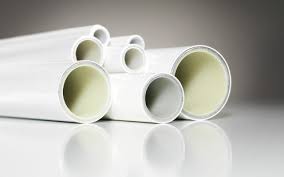Jul . 31, 2024 04:46 Back to list
75mm Plastic Pipe Manufacturing Facility for High-Quality Production and Efficient Supply Chain Solutions
The Manufacturing Process of 75mm Plastic Pipe A Comprehensive Overview
In recent years, the demand for plastic pipes has surged, owing to their lightweight nature, resistance to corrosion, and cost-effectiveness. Among the various sizes available in the market, 75mm plastic pipes have gained significant popularity for diverse applications, including construction, agricultural irrigation, and drainage systems. This article delves into the manufacturing process of 75mm plastic pipes, shedding light on the technology and quality standards upheld in modern factories.
Raw Materials and Preparation
The primary raw material for manufacturing plastic pipes is polyvinyl chloride (PVC) or high-density polyethylene (HDPE). These materials are chosen for their durability and flexibility. Before processing, the raw materials are subjected to quality testing to ensure they meet industry standards. Additives are also mixed in at this stage; for instance, stabilizers and lubricants are used to enhance the performance characteristics of the finished product.
Extrusion Process
The most critical stage in producing 75mm plastic pipes is the extrusion process. In this phase, the raw materials are fed into an extruder, where they are heated until they become a molten mass. The temperature is carefully controlled to ensure the plastic reaches the right viscosity for shaping. Once the material is melted, it is forced through a die that shapes it into a hollow pipe of the desired diameter, in this case, 75mm.
The extrusion process not only shapes the pipe but also allows for the incorporation of various features, such as varying wall thicknesses and even the addition of color pigments for identification. After exiting the die, the newly formed pipe is cooled down using a water bath or air cooling system to solidify its shape.
75mm plastic pipe factory

Cutting and Quality Control
Once the pipes are extruded and cooled, they are cut into specified lengths based on customer requirements or industry standards. Quality control is paramount at this stage. Each batch of pipes is inspected for defects such as irregularities in dimension, wall thickness, and surface quality. Testing may include pressure tests, tensile tests, and bend tests to ensure the pipes meet the required strength and durability standards.
Packaging and Distribution
After passing quality control, the 75mm plastic pipes are packaged for distribution. Packaging is done carefully to prevent any damage during transportation. The pipes may be bundled together or placed in protective wraps, and each package is labeled with relevant information, including manufacturing date, dimensions, and compliance certifications.
The logistics of distribution are crucial for ensuring timely delivery to construction sites or retailers. Factories often collaborate with logistical partners to streamline the supply chain and meet customer demands efficiently.
Conclusion
The manufacturing of 75mm plastic pipes is a blend of advanced technology, strict quality control, and efficient logistics. As industries continue to evolve, the demand for reliable and durable plastic piping solutions is expected to rise. Factories are constantly adapting their processes to not only meet but exceed industry standards, ensuring that customers receive high-quality products that serve a myriad of applications safely and effectively. With continuous improvements in materials and manufacturing methods, the future of plastic piping seems promising, paving the way for sustainable and innovative solutions in construction and beyond.
-
Screen Pipe Solutions Durable HDPE-PVC Pipe Connection Products
NewsJun.02,2025
-
HDPE Elbow & PPR Pipe Elbow Solutions - Durable & Customizable
NewsJun.02,2025
-
HDPE & PPR Pipe Elbows Durable, Corrosion-Resistant Solutions
NewsJun.01,2025
-
HDPE Tee Fittings 48-Inch HDPE Pipe Solutions & Cost Optimization
NewsJun.01,2025
-
Premium PVC Perforated Pipes for Efficient Drainage Trusted Factories
NewsMay.31,2025
-
Premium Perforated PVC Pipes for Drainage Solutions Trusted Factories & Manufacturers
NewsMay.31,2025

